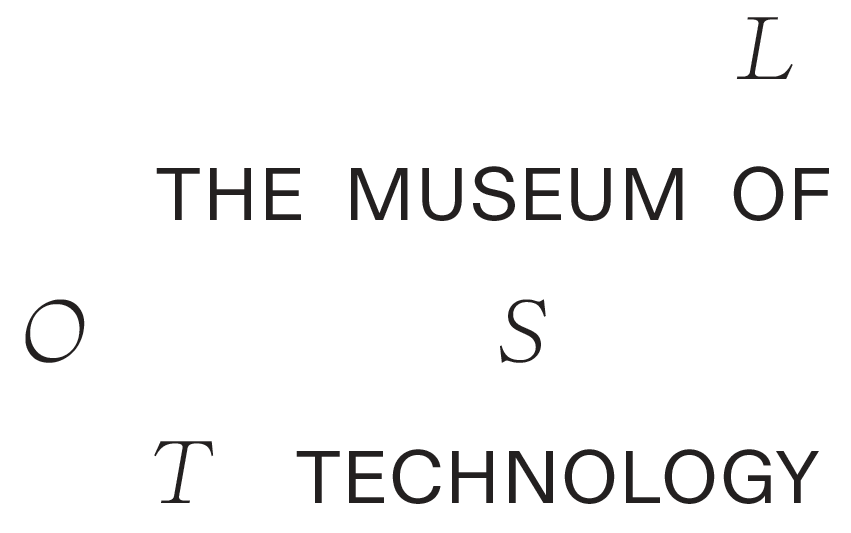In the academic year 2020-21, “The Museum of Lost Technology” is expanded with a weekly art seminar taught at the Department of Textiles – Free, Applied and Experimental Artistic Design at the University of Applied Arts Vienna upon the invitation of Professor Barbara Putz-Plecko. The two-semester seminar series opens some of the themes and questions of the project to students in order to start dialogue towards a growing network of students and colleagues within the university.
Objectives
The seminar series is titled “The Politics of Making” and aims to support applied arts students reach beyond the conventional divisions between art/science, craft/technology, and applied arts/engineering. ‘Technology’, a seemingly neutral term, in fact was invented in the 19th Century as an exclusive knowledge domain that implies hierarchies of values (privileging economic growth), geography (privileging the West) and gender (privileging the masculine). These unspoken biases have created hierarchical structures not only in the ways of everyday life but also in the arts. Technology-engaged art fields—such as media arts and device arts—have been exclusive fields of investigation that had their insiders and outsiders set already from the beginning. Today’s interests in post-digital art-and-technology approaches are making space for new and unconventional material based and experimental practices to enter the scene. The main aim of the seminar is to reveal some of these access points to the students and encourage the students to explore expanded definitions of technology and techno-aesthetics.
The Semester Theme: RAW
The thematic focus of winter semester 2020-21 was RAW—a keyword that places the spotlight on the geopolitics of making. Every piece of technical media is ultimately made of matter. And, looking at the very physical materialities of things can reveal highly diverse and interesting issues around natural resources, global production, logistics, and labor. Through lectures and in-class exercises, the students were guided through a process of unmaking, taking things apart, and investigating what they are made of by taking the search as far as possible to the very raw materials from minerals to metals. A special attention was given to cartographies of raw materials, that is where the materials come from and what is locally available right under our feet—a subject that has become ever more important today after we experienced an abrupt decrease in the possibilities of mobility of both people and things.
Supported by lectures and exercises, the students were guided towards finding their individual artistic research subjects, which they elaborated on throughout the semester. The weekly lectures aimed to provide an overview of art practices developed around the subject, looking closer at works by Robert Smithson, Katie Paterson , Alicja Kwade, and Paul DeMarinis among other artists. Key arguments in the relevant theoretical works such as A Geology of Media (2015) by Jussi Parikka, The Deadly Life of Logistics: Mapping Violence in Global Trade (2014) by Deborah Cowen, The Marvelous Clouds: Toward a Philosophy of Elemental Media (2015) by John Durham Peters, and Digital Rubbish: A Natural History of Electronics (2011) by Jennifer Gabrys were discussed. A special guest lecture given by Dr. Istem Özen Ruber expanded on the themes of materials science, starting from the history of materials research, continuing with the scientific and technical basis, and extending into the future prospects in relation to effects on to the society. Weekly lectures were followed by weekly feedback sessions that aimed to provide the students with a platform to discuss and develop their project ideas.
Student Work
The semester concluded with a final ‘build work day’, which was envisioned as a full-day workgroup activity where students brought fragments of their exploratory works to class and helped each other to set the works up and make documentations of their semester progress. The currently ongoing projects vary in terms of subject matter, media, form, and method.
Mila Balzhieva investigates communicating with living plants as a mode of making. Despite the vast modern scientific research and discoveries in plant-intelligence, utilising plants as raw materials still typically requires the plant to be dead. Inspired by her personal background and knowledge in Siberian shamanic traditions, which recognises all things in nature as spiritual beings, Mila suggests working with the roots of living plants as her material. The first experiments feature typical houseplants such as Zebrina pendula, Pilea peperomioides, and Chlorophytum comosum. At the initial stage, a number of roots are allowed to grow in an agar substrate as they wish. Later on, the growth and direction of the roots is navigated by influencing the plants’ environment through slight movements, physical guides, and the addition of nutrients. The experiment set-up is being shaped along the process based on the analysed responses of the plants.
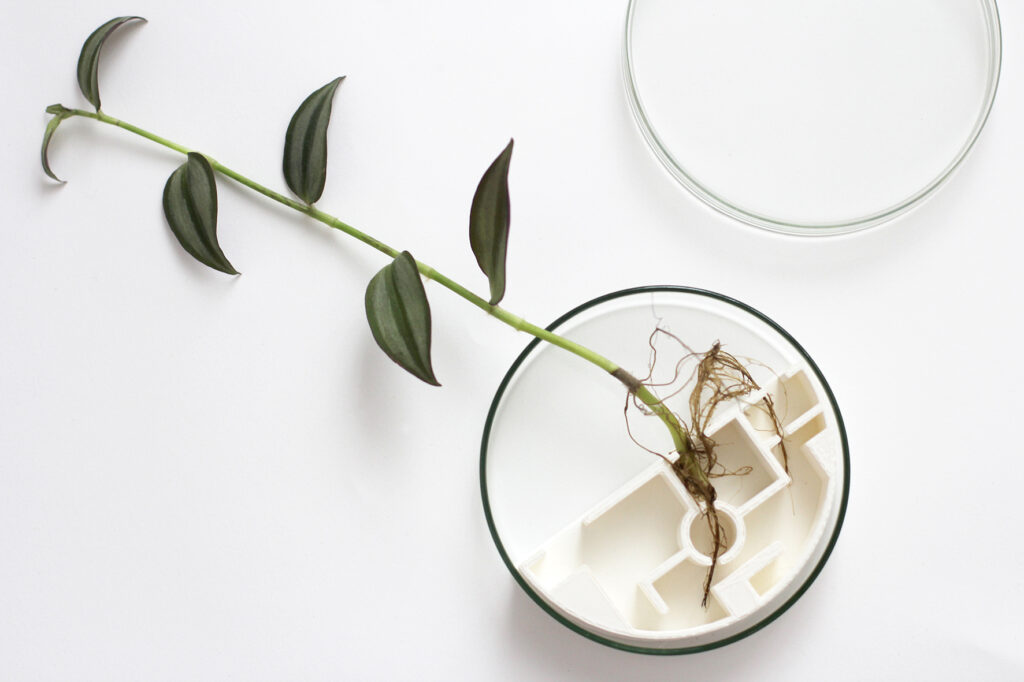
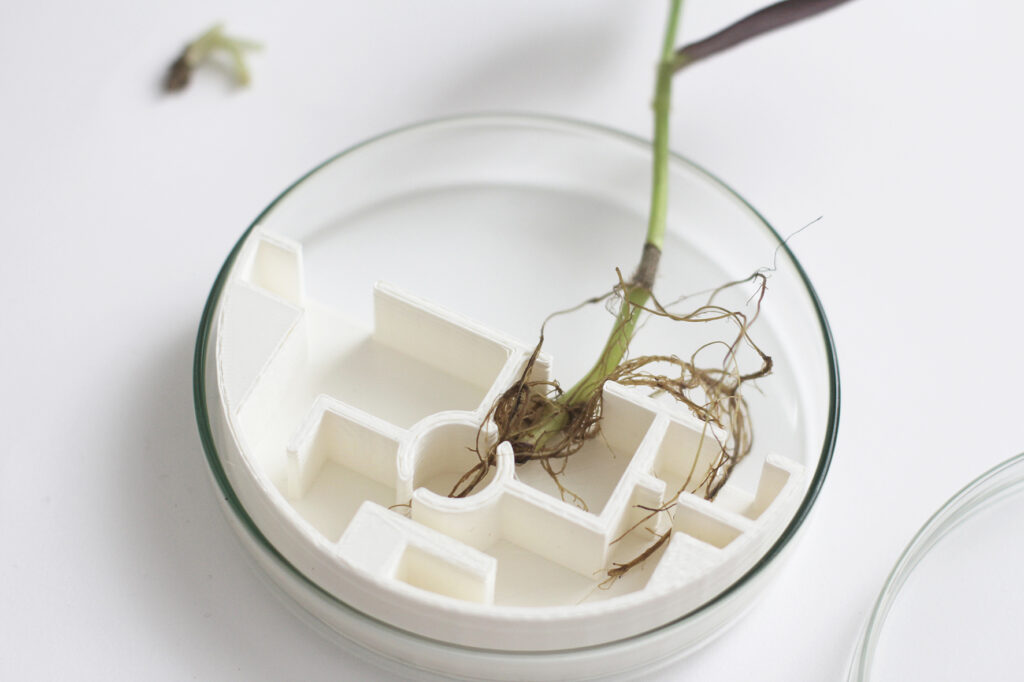
Maria Băcilă looks at the cross-translation of materials through the digital/physical/human/machine, exploring multi-directional (im)material encryption strategies. Using a LIDAR scanner as a starting point, a particular disparity can be seen in the interpretation of the light-matter interaction and related material qualities such as reflectivity and translucence. By studying the unexpected ways light-reflective objects are perceived by the machine, Maria speculates on new material qualities that gain significance in a world where the digital and physical are so immensely entangled.
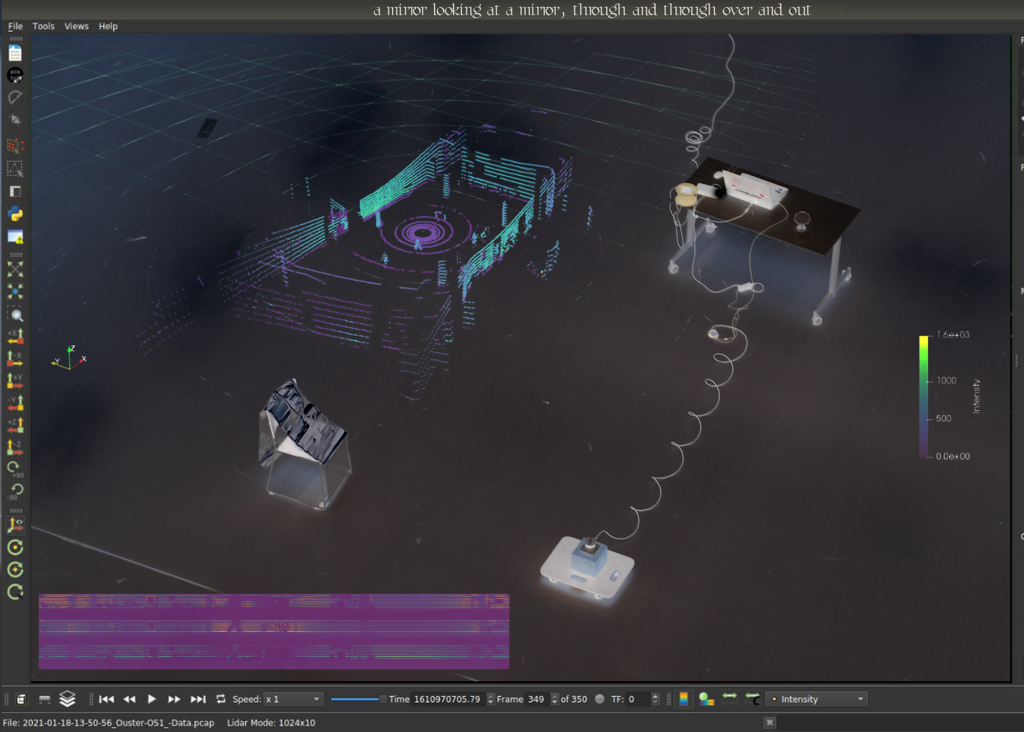
Alfredo Ledesma Quintana, inspired by his personal experience as a third generation member of a silversmith family in Peru, takes a closer look at one particular material: copper. Alfredo focuses on the extractive violence that is ongoing in Peru in the course of the extraction of copper, which is a material that is massively used in electronics circuitry, power generation, power transmission, and telecommunications industries worldwide. In former excursions in 2019, Alfredo had visited both the well-established Antamina mine in the province of Ancash and the upcoming Tia Maria mine in the Valley of Tambo, which will certainly have destructive implications on many surrounding villages including Punta Bombon and Cocachacra among others. His interest lies in how the mere extraction of copper takes on an entirely different meaning from the perspective of indiginious cosmovision, which understands all entities in nature as living beings. The work in-progress is developing towards setting up a participatory work with the local people from Cocachacra.
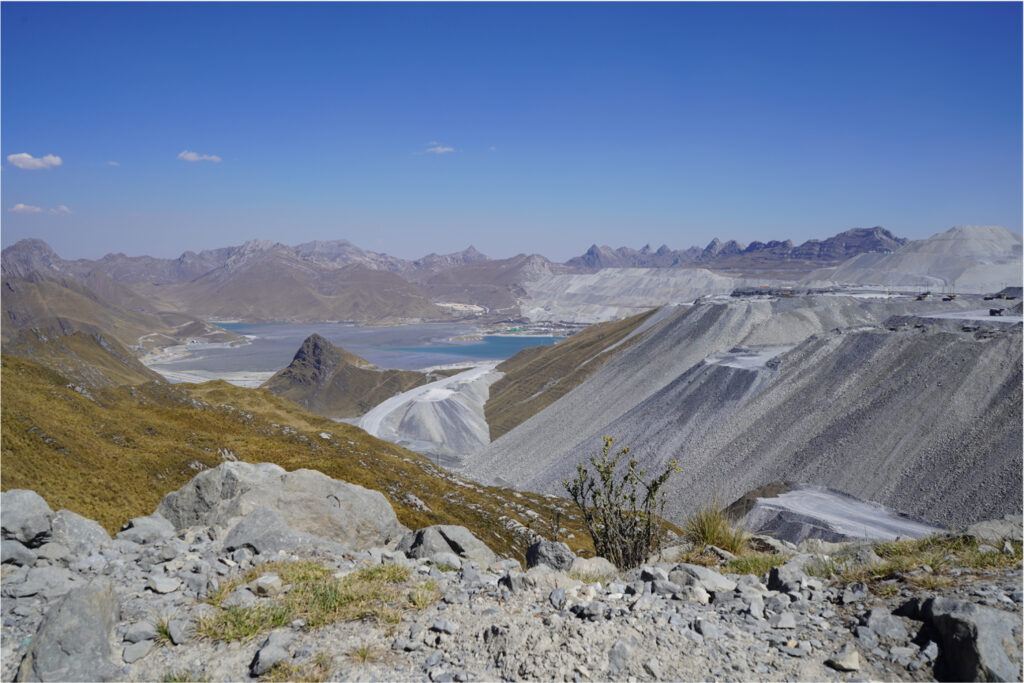
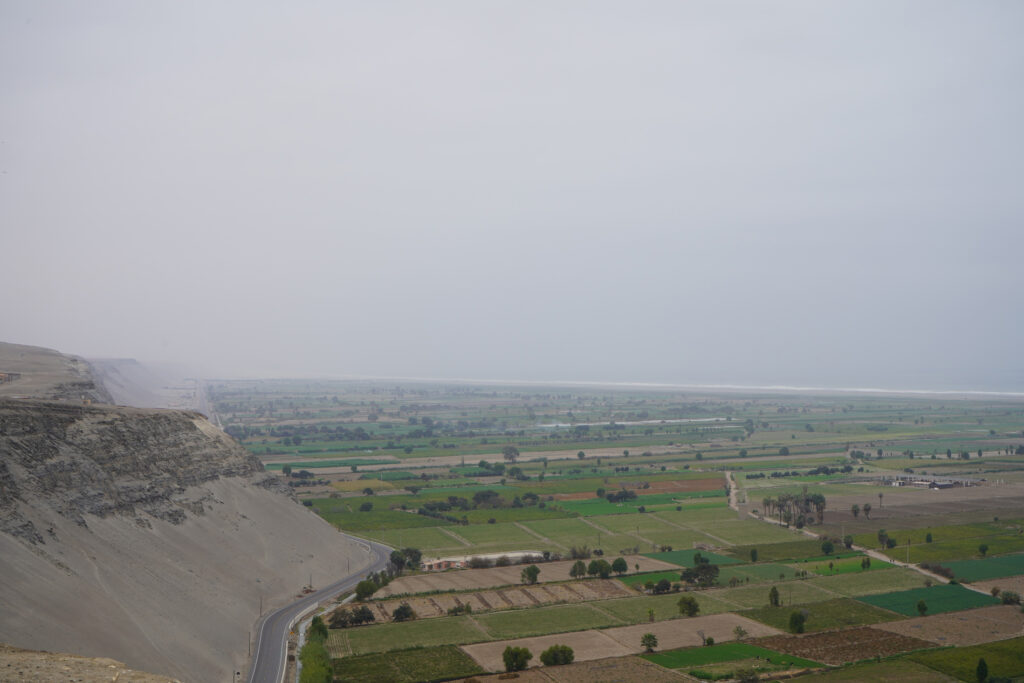
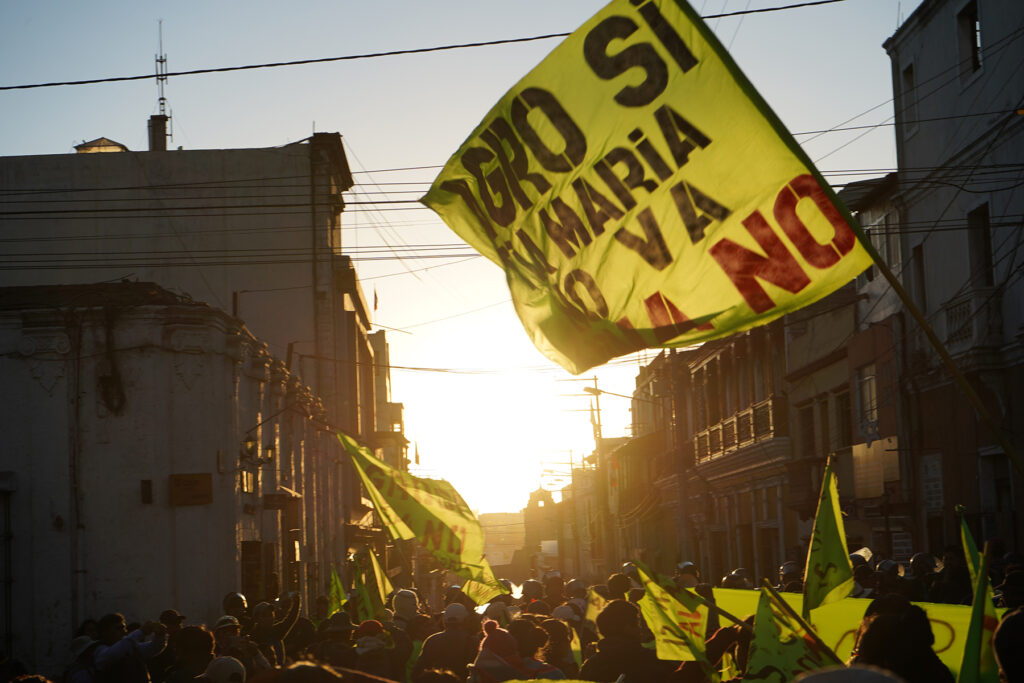
“The Politics of Making—Art, Technology, Ideology” will continue in the summer semester 2021 with its second part, which will build on a new thematic focus.
